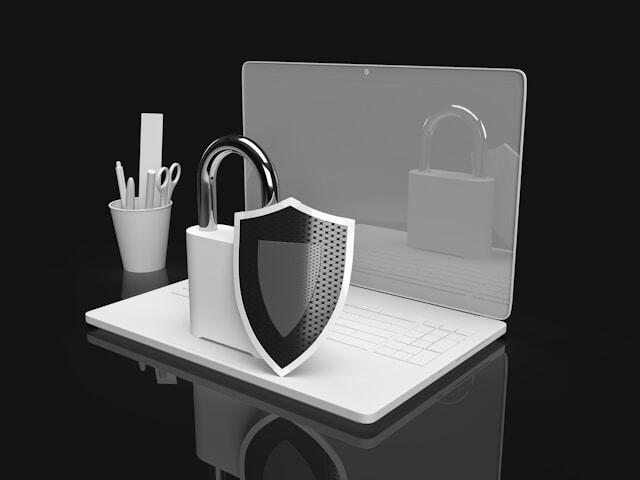5 min read
How to Stay on Top of Cybersecurity Threats in 2024
By:
Standley Systems Staff
on
July 16, 2024
Updated: July 18, 2024

What can businesses do to stay on top of cybersecurity threats in 2024? As cyber threats evolve, companies must adopt proactive measures to safeguard their data and systems. Cybersecurity is not just a technical issue, but a critical business concern that requires strategic planning and continuous vigilance. With the rise in sophisticated cyberattacks targeting organizations of all sizes, the potential impact of a security breach can be devastating—ranging from financial losses and operational disruptions to reputational damage and legal consequences.
In this rapidly changing digital landscape, staying ahead of cyber threats means not only understanding the current threat environment but also anticipating future risks. Companies need to foster a culture of cybersecurity awareness, invest in the latest technologies, and establish comprehensive policies to mitigate potential vulnerabilities.
This blog explores effective strategies and solutions to enhance cybersecurity and protect businesses from potential threats. From strengthening password policies and securing networks to educating employees and developing incident response plans, we cover the essential steps every business should take to fortify its defenses against cyber threats.
UNDERSTANDING CYBERSECURITY THREATS
In today’s digital landscape, businesses face numerous cybersecurity threats, including malware, phishing attacks, ransomware, and data breaches. Understanding these threats is the first step in developing a robust cybersecurity strategy. Businesses must recognize that cyber threats are constantly evolving, and staying informed about the latest trends and attack vectors is crucial.
ASSESSING VULNERABILITIES
To stay on top of cybersecurity threats, businesses must regularly assess their vulnerabilities. Conducting thorough security audits and risk assessments helps identify weak points in the system that could be exploited by cybercriminals. Penetration testing, vulnerability scanning, and risk assessment are essential components of this process, allowing businesses to simulate attacks, scan for known vulnerabilities, and evaluate the potential impact of various threats on business operations.

IMPLEMENTING STRONG PASSWORD POLICIES
One of the simplest yet most effective measures is implementing strong password policies. Encourage employees to use complex passwords and change them regularly. Consider using multifactor authentication (MFA) for an added layer of security. Password policies should include complexity requirements, regular updates, and additional verification steps beyond just a password. This not only enhances security but also mitigates the risk of unauthorized access due to weak or compromised passwords.
REGULAR SOFTWARE UPDATES
Keeping software and systems up-to-date is crucial for cybersecurity. Regular updates and patches fix vulnerabilities that could be exploited by attackers. Ensure all devices, including servers and mobile devices, are running the latest versions of software. This practice includes updating operating systems, applications, and firmware on hardware devices, providing a robust defense against potential exploits.
EMPLOYEE TRAINING AND AWARENESS
Human error is a common cause of cybersecurity breaches. Regular training sessions for employees on cybersecurity best practices, recognizing phishing attempts, and reporting suspicious activities can significantly reduce risks. Effective training programs should cover phishing awareness, security protocols, and incident reporting, ensuring that employees are well-equipped to identify and respond to potential threats.
SECURING NETWORKS AND DEVICES
Businesses should implement robust firewalls, intrusion detection systems, and anti-malware software to secure their networks. Additionally, ensuring that all devices connected to the network are secure and compliant with security policies is vital. Network segmentation, secure Wi-Fi configurations, and regular security updates for all connected devices help protect the business from potential intrusions and cyberattacks.

DATA ENCRYPTION
Encrypting sensitive data is essential for protecting it from unauthorized access. Implement encryption protocols for data at rest and in transit to ensure that even if data is intercepted, it remains unreadable without the proper decryption key. Data encryption helps safeguard confidential information and maintain privacy, providing an additional layer of security against data breaches.
BACKUP AND RECOVERY PLANS
Having a reliable backup and recovery plan is vital. Regularly backup critical data and store it in a secure location. In the event of a cyberattack, a robust recovery plan can minimize downtime and data loss. This involves maintaining multiple backup copies, both onsite and offsite, and regularly testing the recovery process to ensure that data can be restored quickly and effectively.
ENGAGING CYBERSECURITY EXPERTS
Sometimes, in-house expertise may not be sufficient to handle complex cybersecurity threats. Engaging cybersecurity experts or consulting firms can provide specialized knowledge and support to strengthen your security posture. External experts can offer insights into the latest threats, recommend advanced security solutions, and help implement best practices tailored to your business needs.
MONITORING AND INCIDENT RESPONSE
Continuous monitoring of networks and systems can help detect suspicious activities early. Establish an incident response plan that outlines steps to take in the event of a cybersecurity breach, ensuring quick and effective action. This includes defining roles and responsibilities, establishing communication protocols, and conducting regular drills to prepare for potential incidents.
WHAT CAN BUSINESSES DO TO STAY ON TOP OF CYBERSECURITY THREATS?
Businesses can stay on top of cybersecurity threats by implementing a comprehensive cybersecurity strategy that includes regular assessments, strong password policies, software updates, employee training, network security, data encryption, backup plans, expert consultation, and continuous monitoring.
HOW CAN I MAKE MY BUSINESS MORE CYBER SECURE?
To make your business more cyber secure, focus on educating employees about cybersecurity, securing networks and devices, keeping software updated, using strong passwords, encrypting data, and having a robust incident response plan.
HOW DO BUSINESSES PROTECT THEMSELVES FROM THREATS?
It's important to understand the difference between internet safety and cybersecurity. Businesses can best protect themselves from IT threats by implementing firewalls, intrusion detection systems, anti-malware software, regular software updates, employee training, data encryption, and establishing backup and recovery plans.
WHAT ARE THE SOLUTIONS FOR CYBERSECURITY THREATS?
To effectively combat cybersecurity threats, businesses must implement a range of solutions. Using advanced security software such as antivirus programs, firewalls, and intrusion detection systems is fundamental. Regular security audits, including vulnerability assessments and penetration testing, are essential for identifying and addressing system weaknesses.
Strong password policies, combined with multifactor authentication, are crucial for securing user accounts. Data encryption, both at rest and in transit, protects sensitive information from unauthorized access. Regular software updates and patch management are necessary to safeguard against known vulnerabilities.

Employee training is vital to reduce human error, a common cause of breaches. Regular sessions on cybersecurity best practices, recognizing phishing attempts, and reporting suspicious activities can significantly enhance security awareness.
Consulting with cybersecurity experts provides specialized knowledge and support, ensuring the implementation of best practices. Continuous monitoring of networks and systems, coupled with a robust incident response plan, ensures quick detection and effective action against potential breaches.
STAYING AHEAD OF CYBERSECURITY THREATS
Staying on top of cybersecurity threats in 2024 requires a proactive and comprehensive approach. By understanding the threats, assessing vulnerabilities, implementing strong security measures, and continuously monitoring systems, businesses can significantly enhance their cybersecurity posture. Remember, the key to effective cybersecurity is vigilance and ongoing adaptation to emerging threats. Cybersecurity is a continuous process, and businesses must remain committed to protecting their assets and data from ever-evolving cyber threats.
Ready to enhance your business's cybersecurity? Contact our team for expert advice and customized solutions to protect your business from cyber threats. Let's build a safer digital future together!













